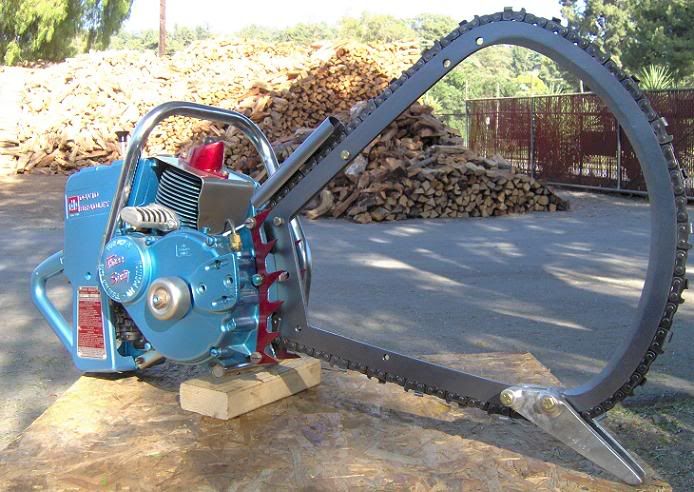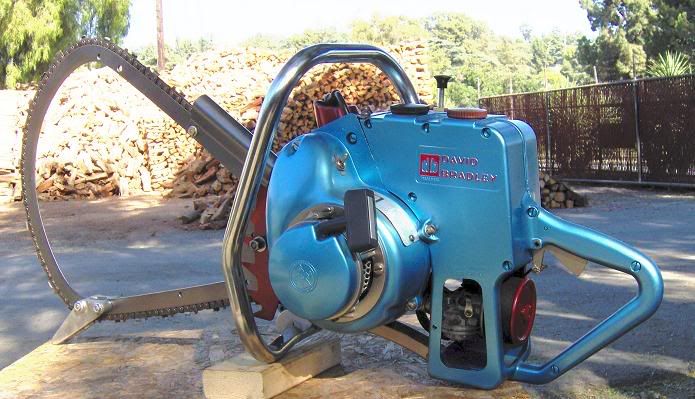davidbradley360
ArboristSite Operative
I have a number of David Bradley gear drive chain saws 1950's vintage, but have none with direct drive. My questions are:
1. What was the purpose of the gear drive ? I found data on the net that stated it was to maintain constant rpm while cutting through large diameter trees- which makes sense- when I think of gearing anything down, I think of putting my 4-speed F-150 in granny low- slow but tons of torque to pull a house over with. Was that the general idea with the gear drive ?
2. Taking into consideration #1 above, what about the direct drive David Bradley saws ? Logic would dictate that the actual chain and/or chain sprocket speeds should be higher rpm and faster, than the gear drive saws. Is this true ? I'd assume the engine rpm would be the same on both types- but engine rpm being the same, wouldn't the direct drive saw cut through a smaller log faster, due to faster chain speed ?
any opinions or hands-on experience welcome, help me sort this one out. Because I've seen both 4.7 cubic inch direct drive, and 4.7 cubic inch gear drive, and just wonder why they'd slow the cutting speed down on the saw in a case like that. What's the advantage ?
thanks in advance for your replies
1. What was the purpose of the gear drive ? I found data on the net that stated it was to maintain constant rpm while cutting through large diameter trees- which makes sense- when I think of gearing anything down, I think of putting my 4-speed F-150 in granny low- slow but tons of torque to pull a house over with. Was that the general idea with the gear drive ?
2. Taking into consideration #1 above, what about the direct drive David Bradley saws ? Logic would dictate that the actual chain and/or chain sprocket speeds should be higher rpm and faster, than the gear drive saws. Is this true ? I'd assume the engine rpm would be the same on both types- but engine rpm being the same, wouldn't the direct drive saw cut through a smaller log faster, due to faster chain speed ?
any opinions or hands-on experience welcome, help me sort this one out. Because I've seen both 4.7 cubic inch direct drive, and 4.7 cubic inch gear drive, and just wonder why they'd slow the cutting speed down on the saw in a case like that. What's the advantage ?
thanks in advance for your replies



































































